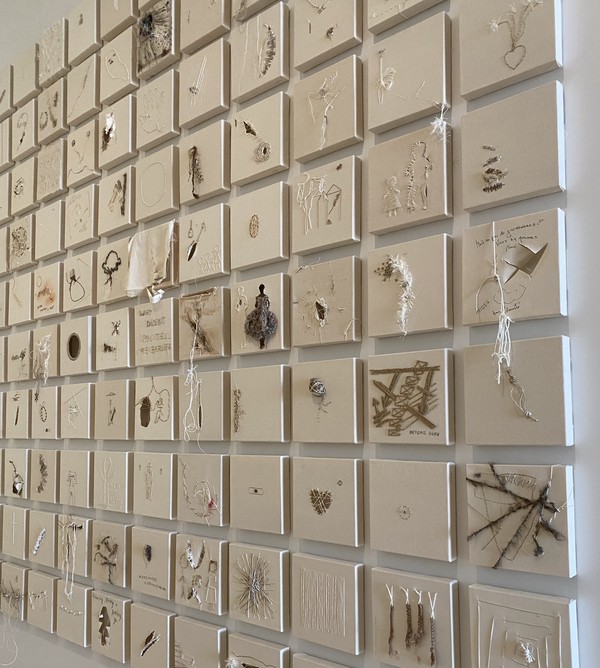In the last week of December 2019, a couple of friends and I visited Québec City, Canada, to commemorate the end of the semester and, of course, the year. Our itinerary consisted of a visit to the Musée national des beaux-arts du Québec (MNBAQ) — which I, as someone who is more of a meme enthusiast than an art enthusiast, was not too thrilled about. As expected, each exhibition that I passed by was unexciting — until I reached an array of square canvases containing a bunch of stitches that, at first sight, seemed quite disconnected from each other.

One was intricately sewn, while another only had a tear. One had a red heart, another a white cross. One displayed a fetus, another a family. An outline of a little girl with the canvas paper punched out that said “learning, living, and letting go”, a face half-covered in black with the words “Alzheimer’s is destroying me”, while another simply said, “Why didn’t you tell me earlier…”
This exhibition was part of “The Scar Project”, which was developed over a course of eight years from 2005 to 2013, in which artist Nadia Myre invited people from diverse backgrounds to share their own scars on canvas, whether it be physical or internal. She wanted to explore how others visually expressed and underwent healing from these scars.
These days, in light of the news about the “Nth room” cases and the Itaewon club incident, I found myself thinking back to “The Scar Project”. Each time I come across an article revealing yet another digital sex offender’s identity, I not only wonder about the trauma that must have been inflicted on the victims, but also what scar the offender must carry to commit such a crime. And as I scroll through yet another homophobic comment targeting visitors to the Itaewon gay club on social media, I wonder what other hate LGBT individuals have endured, and the scars they carry.
Often, I wonder with what purpose these hate comments were posted. If anything, wouldn’t they discourage potential carriers of the virus from getting tested — in fear of being outed to their family and discriminated against in the workplace? During these times of uncertainty, especially when we feel suffocated, locked up at home, we are vulnerable to directing the blame to a target group — but what good does hating on an already-stigmatized social group (composed mostly of mostly innocent people) do? During this time of crisis, rather than losing our temper and spitting out reckless words, we must be even more cautious andconscious of our speech. Instead of aggravating hostility towards the LGBT community (something we might come to regret later), why don’t we relieve our stress in more effective, more productive ways?
Myre, as a Canadian artist of indigenous descent (specifically Algonquin), wanted to understand, through her work, the scars and struggles experienced by the First Nations people who were forced out of their cultures and displaced from their lands. It was not until the start of the 21st century that the Canadian government acknowledged its wrongdoings and actively attempted to compensate for their past through the Truth and Reconciliation Commission of Canada, which provided a platform for aboriginal people to share their stories of oppression.
But at least the Canadian government did eventually recognize the harm inflicted on the minority group — the indigenous people. Will the Korean public be able to recognize that the strict gender norms that arise from a conformist and collectivist culture may not always be a one-size-fits-all — that having a nonbinary gender orientation or diverging from the ideal beauty standards should not be a reason to be shunned by society?
Maybe one day, they will realize that they did wrong to their son whose suicide attempt they brushed off as “just stress that every high schooler goes through”, to the co-worker who was sexually assaulted and told to “keep quiet if you want to keep your job”, to the gay passerby who heard the phrase “you’re gay” as an insult… Maybe one day, they will realize that these people might carry that scar permanently.

